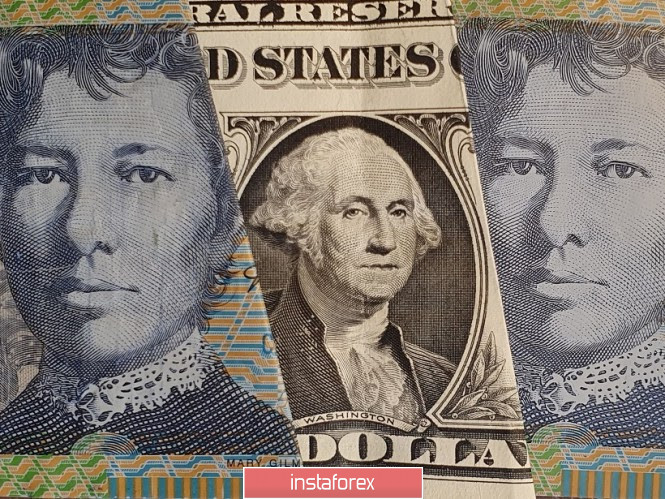The Australian Dollar continues to hold the line, trading above the key support level. At the beginning of this week, it became an outsider of the currency market, against the background of an extremely negative fundamental picture. Despite the multi-day pressure, the Australian was able to hold its position above the 0.7000 mark. The bears will have difficulty to gain a foothold below this target. At the end of September, AUD/USD sellers were already trying to go lower, but all these attempts failed. The Australian Dollar is back in the 0.71-0.72 range. However, it is worth recognizing that a month ago the situation was somewhat different. The downward trend was mainly due to the strengthening of the US Dollar, while the Australian dollar, on the contrary, acted as a counterweight. At the moment, the situation is radically different: the pair is declining due to the numerous problems of the Australian Dollar, while the vulnerability of the US Dollar allows buyers of the AUD/USD pair to restrain the onslaught of sellers.
Over the past 10 days, the Australian Dollar has been hit by a number of negative fundamental factors. Initially, China banned the import of Australian coal. This is an unspoken instruction from Beijing, according to some reports, that will remain in effect until at least the end of the year. According to some estimates, this will cost the Australian economy $ 17 billion.

Then the head of the Reserve Bank of Australia, Philip Lowe, allowed an interest rate cut to 0.1%. This happened immediately after the release of unimpressive data on the growth of the labor market in the country. The unemployment rate rose and the indicator of growth in the number of employees fell into negative territory. This is mainly due to the reduction of full-time employees. Another RBA representative, Christopher Kent, also announced his intention to lower the rate. At the same time, he clarified that one of the options for easing monetary policy is also to buy longer-term bonds. In addition, The minutes of last week's RBA meeting were published, according to which the members of the regulator allow the option of reducing the interest rate to zero while increasing the volume of bonds being bought. To top it all off, the news that the Australian Navy will be included in the joint exercises of India, Japan, and the United States in the Bay of Bengal. At the same time, it is known that the Malabar exercises are negatively regarded by the Chinese military, and, accordingly, by the Chinese leadership.
However, despite the negative fundamental background, the AUD/USD bears could not overcome the support level of 0.7000. Moreover, sellers did not test this target. The weekly low is fixed at 0.7022.
Yesterday, buyers of the pair were able to demonstrate a corrective growth. The price returned to the area of the 71st figure but they are not yet able to gain a foothold in this price area. It is worth noting that the correction is due not so much to the weakness of the US Dollar but to certain gaps in the fundamental background for the Australian Dollar.
After the Chinese banned Australian coal imports, there were rumors on the market (to be more precise, the assumptions of some specialized experts) that the PRC may restrict the import of iron ore. If the estimated losses from the coal ban amount to about $ 17 billion, loss for the iron ore may increase by another 100 billion. It is known that iron ore reserves in Chinese ports are growing, as leading producers in Australia and Brazil have increased supplies in recent weeks, while demand for metal products and raw materials remains low. In other words, the situation is already unfavorable, so if political factors are added here, the Australian economy will feel another blow.
Amid such concerns, it was announced yesterday that the Chinese company, Sinosteel, has signed a contract for the supply of ore from a new deposit in Western Australia. It is expected that this field will produce almost one and a half million tons of raw materials per year. Approximately one million tons of the total volume will be delivered to China. It should be clarified here that Sinosteel is the second largest importer of iron ore in China and one of the largest producers of mining and metallurgical equipment.

This signal is of a fundamental nature. It is very important for the Australian dollar. As you know, China is the largest importer of ore. Last year, 70% of the world's raw material imports went to China. In turn, Australia is the world's largest supplier of ore to China. Therefore, yesterday's news helped to neutralize investors' concerns, after which the Australian Dollar paired with the greenback rose by almost 100 points over the day.
However, the upper prospects for the AUD/USD pair, in my opinion, now look vague. There are too many negative fundamental factors tipping the scales. A likely interest rate cut at the November meeting will put pressure on the Australian Dollar, especially since the option of reducing it to zero is also not excluded. Therefore, the current growth of the pair at the moment should be considered as a reason to open short positions. The main goal is the 0.7000 mark.





















